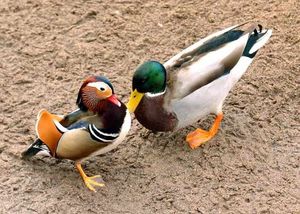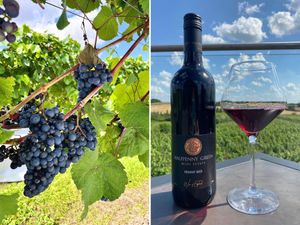Rare duck has the birdwatchers twitching
Twitchers are flocking to a Shropshire market town to catch a glimpse of a rare Chinese duck.

Twitchers are flocking to a Shropshire market town to catch a glimpse of a rare Chinese duck.
The mandarin drake, an oriental symbol of married bliss and fidelity, is attracting attention from bird watchers and visitors to Bridgnorth after appearing on the banks of the River Severn in Low Town.
Bird enthusiast and photographer Ray Hulse said he had seen the Mandarin several times but doubted it had flown from China.
"It has probably escaped from a UK collection, but it is still unusual to see one in an area like Bridgnorth," he said. "It is not supposed to mix well with other ducks, but it certainly holds its own when it scrambles to get the bread that is thrown in the water."
Twitchers are flocking to a Shropshire market town to catch a glimpse of a rare Chinese duck.
The mandarin drake, an oriental symbol of married bliss and fidelity, is attracting attention from bird watchers and visitors to Bridgnorth after appearing on the banks of the River Severn in Low Town.
Bird enthusiast and photographer Ray Hulse said he had seen the Mandarin several times but doubted it had flown from China.
"It has probably escaped from a UK collection, but it is still unusual to see one in an area like Bridgnorth," he said. "It is not supposed to mix well with other ducks, but it certainly holds its own when it scrambles to get the bread that is thrown in the water."
The mandarin duck symbol is often used in Chinese weddings because of the male's role in nurturing its offspring after they have hatched. Unlike other species of ducks, most drakes reunite with the hens after they have mated.
The species was once widespread in eastern Asia but large-scale exports and the destruction of its forest habitat have reduced population numbers in eastern Russia and in China to below 1,000 pairs in each country.
In the last century a feral population of about 1,000 pairs was established in Great Britain.
Although this was of great conservational significance, the birds are not protected because the species are not native to the UK.





